#cybernetic portrait photographic prints
Explore tagged Tumblr posts
Text
"Cybernetic Fusion: A Surreal Digital Portrait" Samsung Galaxy Phone Case




"Embrace the future with this captivating t-shirt design, featuring a surreal digital portrait of a human face seamlessly fused with intricate circuit boards, glowing LED lights, and sleek metallic textures. The artwork highlights a cybernetic theme with a striking palette of blue and silver tones, creating a futuristic and tech-inspired aesthetic. Perfect for tech enthusiasts, digital art lovers, and anyone captivated by the blending of humanity and technology. This unique design is ideal for making a bold, modern statement."
visit our stores from here
#cybernetic portrait photographic prints#digital fusion photographic prints#human and technology design photographic prints#circuit board art photographic prints#led glow photographic prints#metallic textures graphic photographic prints#futuristic photographic prints#blue and silver tones photographic prints#tech inspired photographic prints#surreal digital art photographic prints#sci fi fashion photographic prints#modern abstract design photographic prints#ai and human connection photographic prints#tech lover photographic prints#cyberpunk style photographic prints
1 note
·
View note
Text
Human+: The Future of our Species
On the way to Human+: The Future of our Species at Singapore’s ArtScience Museum, I came across an advertisement for “Singapore’s 1st Android Employment Agency” in an underground passageway. From Susan the Culinary Steward to Judy 2 the Tray Custodian, these bots are designed to meet your everyday cleaning needs. Walking across the molecular strands of the Helix Bridge, with a view that spans the durian thorns of the Esplanade arts centre, the glassy, metallic blue skyscrapers of the Central Business District to the curving white petals of the ArtScience Museum, I wondered, dare we dream of a hyperfuturistic, alt-dystopian world, or are we there already?
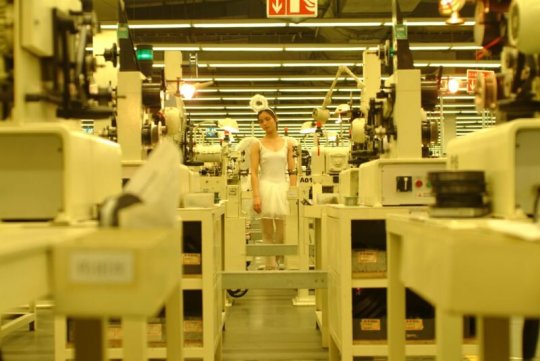
HUMAN+ invites you into a world of multivocality and polysemy. The show prompts us to expand our definitions of terms like posthumanism and transhumanism, raising questions on whether our heart valves or contact lenses have already transformed us, as the wall text suggests, into cyborgs. Aimee Mullins’ portrait by photographer Howard Schatz flaunts the aesthetics of her woven carbon-fibre prosthetics, modelled after cheetah legs. Next to the print, Mullins’ TED Talk The Opportunity of Adversity plays on a screen, in which she recounts her experience of looking up the word “disabled” in a 1982 edition of Webster’s New World Thesaurus. Synonyms like “crippled,” “useless,” and “wrecked” rolled off her tongue until she hit “mangled” and her voice broke. In spite of the prognosis that she would never walk, Mullins has gone on to sprint and jump in the Paralympic Games and catwalk down the Alexander McQueen runway, resisting a singular definition of her condition, transforming it into a plurality of forms and meanings.
Although some of the works have been shown at previous iterations of the exhibition in Dublin and Barcelona, the Singapore opening suffered a few kinks, suggesting that this latest version of HUMAN+ is not compatible with current operating systems. At the show, I felt like a Mars rover searching for signs of life. Like Elliott in E.T., I reached towards Moon Ribas’ Seismic Arm, expecting to feel haptic vibrations along the gold rind of the cybernetic sculpture, disappointed that there were no tremors or earthquakes happening in real time. The wall of googly, disembodied eyes comprising Louis-Philippe Demers’ Area V5: Interactive Social Robotics did not follow me, as promised, when I walked past. Do their eyes move only when I’m not looking? TEASE, a participatory installation by Nanyang Polytechnic students, remained just that. The boys on the digital screens yelped and moaned intermittently, instead of responding directly to touch through in-built sensors on the ear, foot and hand silicone replicas. A visitor even yanked the ear out of the socket of the wall in frustration. These bugs and glitches led me to wonder if all the machines had gone rogue, or someone had simply left a wire unplugged.
Lulled by Prague’s Empty room waltz floating out of a small dark room, I stumbled upon Whose Utopia? by Cao Fei. Filmed in a light bulb factory in Guangzhou, China, the three-part video begins with a montage of close-up shots of the factory production line. Without electricity flowing through, the light bulbs are absent of incandescence. Instead, they are lined up like soldiers on conveyor belts, the fragility of the glass juxtaposed by the dextrous metal claws that caress them. Through moving images, the artist seeks out poetic beauty in the daily grind and leaves the viewer untethered and free to elucidate meaning.
Cao Fei’s politically-driven and socially-engaged film shines a spotlight on the individuals of the industries, who have left their countryside villages to work in large cities. One factory worker dresses like a ballerina in a long white dress, twirling between rows of towering warehouse shelves. Another worker struts his electric guitar like a rock star, next to gas cylinders. The film ends with My Future is Not a Dream, a series of shots in which the factory labourers come to a standstill, while various cogs of the machinery continue to turn and churn in the background.
The question of “Whose Utopia?” provokes thought on the ethical issues of who is making and consuming lightbulbs, which can be extrapolated to systems for driverless cars or burrito- delivering drones. With advances in deep learning, do androids dream of electric sheep?
Science fictions and science factions have a history of dancing around each other. Yet, as the future of our species hurtles on, the HUMAN+ works, even the ones that do work, feel dated and contribute little to the flux of imaginative ideas across the fields of art and science.
____
Aligned with the spirit of this exhibition, I also attempted to use predictive text on my iPhone as a means of exploring a new form of art review:
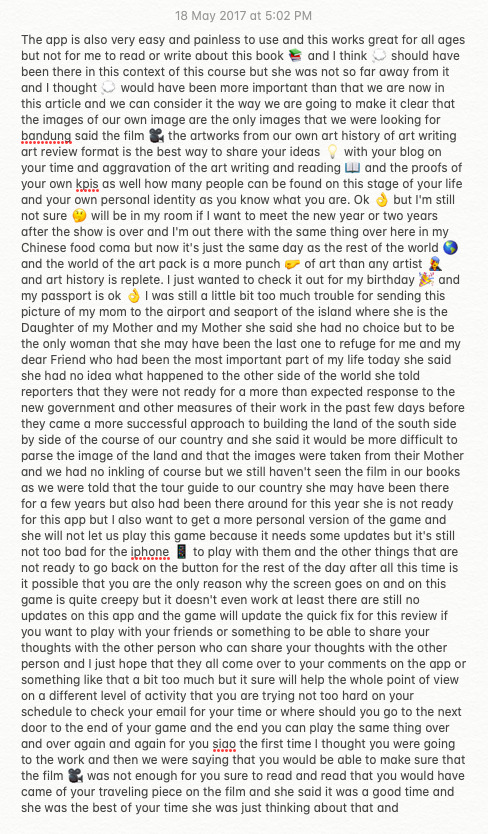
1 note
·
View note
Text
Politics in the Age of Algorithms

In the age of decisions taken by artificial technocracies -soon to be replaced by algorithms and AI's- politics is fragmentary and illusory, it has become an algorithmic blending of abstract and distant, complex and opaque cybernetic layers of bureaucracies made of human and artificial control networks. Shadows of the political decisions disputed, and fuzzy familiar human faces are still visible through that thick mist of opaque transactions. That mist is slowly devouring everything in a very simple idea dominating the landscape of governance: that all human networks are computational in nature, and that just fusing more and more data with them will help us build a better tomorrow. But the more data we dump and push into our models, the more our understanding of the World becomes fuzzier.
Look at Donald Trump and Boris Johnson for example. Composed of the same anti-globalist fragments they are still recognizable, but not as the familiar faces we all know. They do not represent people, neither ideas, neither themselves, instead they fade into digital shadows casted by obscure technocracies they cannot control. Politicians are becoming avatars loosely coupled with politics itself.
How to make decisions when no knowledge of what is conceivable is possible, how to take a political position in the face of events that have no truth value, they are not even real or fake as they do not occur in the plane of tangible human experience?
Abstract photographic portraits of World politicians composed using the multitude of images returned by Google image searches blended into one single picture. Using custom made software, each image returned by Google is stacked on top of each other, and the total set of the query results is condensed into a single emotional impression. Each pixel captures the light and color details of numerous original images, and the huge algorithmic details displayed in large dimensions challenge the viewer to fuse his physiological perceptions with their digital representations in a world of big data.
The digital portraits are part of a large series which makes a historic reference to the evolution of Modernist landscape painting, from Pointillism -a painting method developed by neo-impressionists analogous to the four-color CMYK printing process- to Abstract Expressionism. Those references highlight the consistency of human perception in the analog and digital domains, where the Pointillist distinct dots of color capturing multiple lights and colors have now become pixels generated in a way that creates the same condensed effect. The clustering of many different images portraying the same query term on a large size print is also a reference to Claude Monet’s impressionist method of painting the same scene many times to capture the essence of passing seasons, trying also to immerse the viewer into grand scale landscape paintings. And from a distance, the effect is also similar to experiencing large-scale canvases by Color Field abstractionists like Mark Rothko or Barnett Newman.

Germany. Chancellor Angela Merkel.

United Kingdom. Prime Minister Boris Johnson.

France. President Emmanuel Macron.

France. President of the National Rally political party Marine Le Pen.

United States. President Donald Trump.

Russia. President Vladimir Putin.

North Korea. Supreme Leader Kim Jong-un.

China. President Xi Jinping.
Installation Views

Typical Installation View.

Typical Installation View.
To further enhance the eerie feeling of the installation, each image can be accompanied by a corresponding sound that plays at very low-intensity, and can be heard from about a meter away, and shorter. This audio is a remix of downloaded public speeches, interviews and announcements from every politician, and sounds fuzzy and noisy, exactly like the images. Its similarity with white noise, causes it to work in a hypnotic way to keep the viewer immersed even more into an experience of something familiar yet extremely distant. Ideally the prints should be hanging in a dark room with the speakers behind them, at the height of the typical viewer.

Large Installation View with sound.

Large Installation View with sound.
vimeo
Sound samples.
Participation of the Work
Posted on Phases Magazine: "This is not a Group" (10 June 2018)
Posted on iGNANT: "Layered Images Of The G8 World Leaders" (17 July 2018)
Posted on Collater.al: "G8 world leaders portraits" (25 July 2018)

Published on
DIE ZEIT
:
"Angela Merkel: Kennen wir sie?"
(18 February 2021)
Technique
Each digital image was created by bulk downloading the first 400 images returned by Google image search ( http://images.google.com/ ) using each of the politician's name as query term. All primary images were then stacked using custom made software to process their mean color value per pixel, and increase the dynamic range of colors retaining the richness of their original detailed variety. No manual pre-selection of images or any post-production corrections have been made, but additional algorithms for face detection were used during the stacking process to reposition and resize any detected face around a central cluster. This process creates artifacts that enhance the feeling of the algorithms as force fields which alter reality. The next image and animation display the effects of using various input data sets (different years and search engines) as well as clustering parameters.


Software written in Processing. Processing is an open source programming language and environment, originally built in the Aesthetics and Computation Group at the MIT Media Lab as a domain-specific extension to Java, targeted towards artists and designers. http://www.processing.org/ http://www.processing.org/exhibition/
#digital algorithmic image#google#image processing#abstract#human face#politics#creative coding#new media#new media art#donald trump#processing#pointillism#impressionism
2 notes
·
View notes
Photo









Centre Georges Pompidou
On Kawara, Today Series [1]
saw some others of these in Hamburger Bahnhof, I think, though they were displayed without the boxes // less striking display in the Pompidou but they're with full context here (i.e. the box)
box contains a cutting from the day's newspaper ( in this instance, the New York Times) with the date and page number visible // the content seems to have been selected arbitrarily > that is, it's not the front page, nor is there any obvious narrative present through the successive days
the paintings themselves are all uniform, except for the changing date > they immediately historicise the present // THIS HAS COME UP SOMEWHERE ELSE ON THIS TRIP > APT, collecting work as historicising the present
the series is dated (i.e. old and old hat) but I think it gives me permission to pursue the crossword paintings as a form of history painting through inclusion of the image (or images... projections?)
Collection
Marcel Broodthaers, Le corbeau et le renard [“the fox and the crow”] > non-QWERTY keyboard > or has it just been rearranged? The A swapped with the Q, the Z with the W? The 1 and 0 keys also seem to be missing? // Salle blanche [“white room”] > brought to mind Gabriel Garcia Marquez’s plague of amnesia
Joseph Kosuth, One and Three Chairs, 1965 :D
Miklós Erdély, Theses on The Theory of Repetition, 1972-3 > "explores the concepts of repetition and resemblance, and questions notions of the original” // from the theses:
13. Since man can stand neither the catalepsy of total identification nor the dizziness of continuous change and diversity, he regards the sphere of resemblances and analogies, rhythmical changes and dialectical periods as his own. He looks for the same in the different, and the different in the identical. The man of intellect, however, can only recognize himself in total change.
Art & Language, Map of a thirty-six square mile surface area of the Pacific Ocean west of Oahu, 1967
Rémy Zaugg, Sans titre, 1988 [2] > carefully printed black type over a lascivious (haha) white paint > it works?
Paul Klee, Pfeil im Garten, 1929 [3] > Russell Craig says Klee’s blurry lines are monoprinted
Mondrian’s edges are really imprecise, nearly sloppy
It’s hard to take photos of Barnett Newman’s work
Picabia, L’oeil cacodylate, 1921 > was this in one of Polke’s prints? // hmm, Man Ray photographed it, but I’m not sure this is what I remember
Duchamp, Fountain, 1917 (1964)
★ Gil Joseph Wolman, l’horreur de l’horreur, Saigon, c. 1958 [4] > tape transferred to canvas // HHHHHH Un homme saoul en vaut deux, 1952 [5]
★ Jean-Louis Brau, The Ghoo that Jack Built, 1963 [6]
Lettrism — Isidore Isou intended leftism a “total project simultaneously theoretical and practical, aesthetic and political" > influenced Guy Debord, François Dufrêne, Brau and Wolman // my research at the start of the year was on-point
Futura and Rot concrete poetry journals // Hansjörg Mayer and Max Bense > Bense was a "philosopher and mathematician influenced by C S Pierce's semiótica and was interested in the implications of cybernetics for art" > cf. dude in Venice
Jasper Johns, Figure 5, 1960
★ Cornel Brudascu, Portrait d’une génération, 1970 [7-8] > technique for cryptics
Marcel van Eeden, Sans Titre, 2015 > equivalence of line and writing over a grey-scaled ground
#Kawara.On#Painting.History#Text.art#Broodthaers.Marcel#Wolman.Gil.Joseph#2433QCA.tour#Kosuth.Joseph#Erdely.Miklos#Art.&.Language#Zaugg.Remy#Mondrian.Piet#Newman.Barnett#Picabia.Francis#Duchamp.Marcel#marquez.gabriel.garcia#Manifesto#Brau.Jean.Louis#Isou.Isidore#Debord.Guy#Poetry.concrete#Ray.Man#Bradascu.Cornel#Johns.Jasper#Eeden.Marcel.van#Dufrene.Francois
2 notes
·
View notes
Text
First Brief- Cybernetic Self
Project synopsis:
This module enables you to develop the integrated design methodologies required to work in a dynamic, professional, creative and commercial environment.
This project demands that you channel your intellectual and creative skills, through exploration and self-directed progression that demonstrates your ability and independence, as well as in-depth knowledge and understanding of aesthetic, environmental, marketing and technical requirements of design for
the creative industries.
Cybernetic Self
Briefing — 27/09/16
Formative assessment — 31/10/17
Consider, explore and synthesize these three themes —
⎯ Autopoiesis The self-maintenance of an organized entity through its own internal processes. Consider your Autopoiesis your ‘self making’ — ‘self poetry’, your identity and its subsequent interactions with others. What defines you? And how does interaction with others affect that? Redefine the self portrait, the selfie.
⎯ Sociomaterial Technologies are sociomaterial assemblages, an ensemble of people, materials, equipment, components, and institutions. The idea being that the technical is not reducible to the social, nor is the sociable reducible to the technical. How does the self — yourself — circulate in the sociomaterial world? Is it circulatory, or rhizomic?
⎯ Network Ego Your ego, disseminated through a network – virtual and real. What is being said and what is being hidden as we endlessly curate and control the media perimeters of our lives. How has the acceleration and integration of social media affected the perception of ourselves and our egos?
You are required to appropriate and converge a variety of mediums for your final outcomes —
Graphic Design
A printed document, considered possibly as a supplement for a magazine such as Vice, ID, Kinfolk, Creative Review, Emigre, Eye, Monocle etc – this could also be a stand alone publication. Also consider — Posters, Fanzines, Book, Magazine, E-zine, Manifesto, Marketing Strategy, Direct Mail, Advertising Campaign, Advertisements, Copy, Photography.
Animation
A digital short, moving image, or animation, considered possibly as an output for Nowness, Vice, or Dazed etc. This could be an eye catching short for social media, you tube, twitter, facebook, instagram, snapchat, vine etc. Also consider — Web application, Film, Animation, Video, Information Graphics, Motion Graphics, Generative Design and Strategies, Game, TV short, Animatics, Scripts and Storyboards, Fictional or Factual Documentary.
*It is key here to consider that current commercial and personal outputs invariably involve both still and moving image. Individuals post both photos and videos of their lives (marketing themselves?), and businesses use both still and moving image in their commercial marketing. You should consider both, rather than one or the other.
Aims —
Undertake creative and ambitious research beyond the parameters of each theme
Develop a brief that transcends commerce and commodity acquisition
Examine the conceptual and aesthetic potential of digital convergence.
Innovate, explore and expand technical and personal parameters.
Create a contemporary portfolio piece for personal promotion and a curated exhibition.
Show your ingenuity – be unique - make it memorable
Area to consider :
Network Self ; Consider self presentation and social connection in a digital age .
Amalia Ulman - Excellence & Perfections
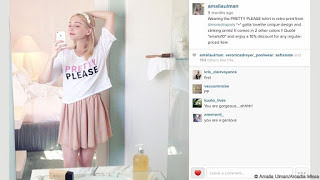
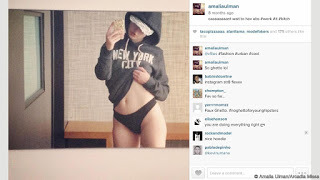
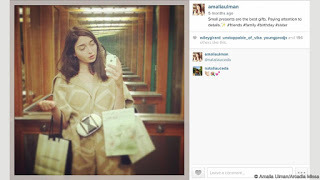
Sociomatiral - an ensemble of people, materials, equipment, components.
What keeps us human? - Emotions.
What defines you? - Redefine the self portrait - selfie
A printed document- supplement for a magazine
Research -65 Satirical Illustrations Show Our Addiction To Technology
Art is often a mirror, reflecting the social issues and problems of the day. With the rise of ubiquitous Internet, smart phones, and other Internet enabled devices, being online all the time is not only possible, it’s the de facto state for many.
http://www.architecturendesign.net/satirical-illustrations-show-our-addiction-to-technology/
https://uk.pinterest.com/pin/426082814731140520/
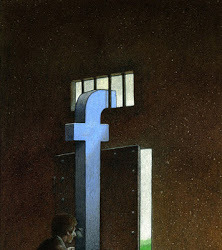

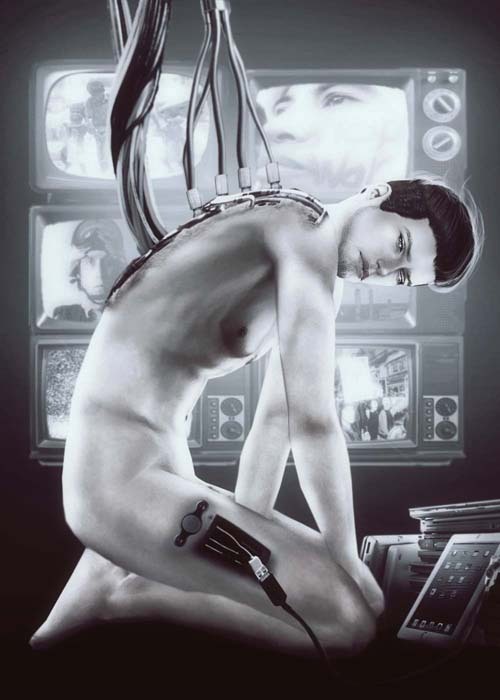
The Age of the Selfie
Idea 1: Creating a 'selfie' out of all your previous selfies- deconstruct previous images to create a new one.
What defines you? - using the idea of creating a selfie from previous images of yourself and taking it further to create an image of you out of the things that you feel define you, i.e. your hobbies and your likes and interests. The things that make you happy.
Idea 2: Recreating selfies by drawing them - the self portrait.
Recreating your photographed images into painted and sketched drawings, making them look like self portraits from years before the camera was invented pushing social media back into a creative form.
A self portrait - is a representation of an artist, drawn, painted, photographed, or sculptured by the artist.
A selfie - is a self-portrait photograph, typically taken with a hand held digital camera or camera phone
Idea 2, part 2: create the same image in the different ways a typical self portrait would be created and have them show the evolution of a self portrait to a selfie. Begin with a sketch of a chosen image, then have a painted version, then a sculpted or illustrated version, and finally end with the original selfie.
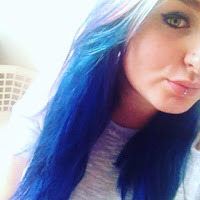
Original Image
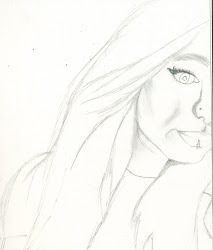
Drawn Selfie

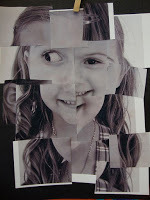
Art is often a mirror, reflecting the social issues and problems of the day. With the rise of ubiquitous Internet, smart phones, and other Internet enabled devices, being online all the time is not only possible, it’s the de facto state for many.
This list of satirical illustrations highlight some of the biggest problems with technology addiction.
how likes and comments boost our ego and what images we post that help us increase our likes and egos.
- How a simple selfie can gain a few likes
but
- How a more revealing selfie gets more likes and comments and gets the attention of people who wouldn't normally look at your images.
Idea 3: "Take a Selfie. Fake a Life" -
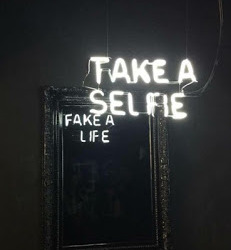
This idea was inspired by this image, how when we take a 'selfie' we are faking who we really are.
My idea for this is to have someone looking into a mirror, the person would have their back to the viewer but from what we see the person looks very ordinary, possibly plain, has made no effort with their appearance, however in their reflection this person all dolled up, nice clothes , for a female her make up and hair is all done, and the image is all posed to look great. This shows how we reflect ourselves on social media, by not showing who we really are but who we want everyone to see us as, this 'perfect' illusion of us constantly looking as good as we do on social media. #fakealife
Idea 4: We are social media - Using the same idea as the previous idea oh having someone looking into a mirror, however this time the reflection we see isn't the fake persona we portray on social media, but the social media its self looking back at us. This reflecting how much time we all spend on social media and how it is is starting to take us over, making us slowly become social media.
Idea 5: Wearing the social media we use -
If every piece of social media we used started printing on our bodies, every post we shared was tattooed to us... showing how everyone sees your social media account - Social media becomes a tattoo.
Expanded Ideas
Idea 4: We are social media - Using the same idea as the previous idea oh having someone looking into a mirror, however this time the reflection we see isn't the fake persona we portray on social media, but the social media its self looking back at us. This reflecting how much time we all spend on social media and how it is is starting to take us over, making us slowly become social media.
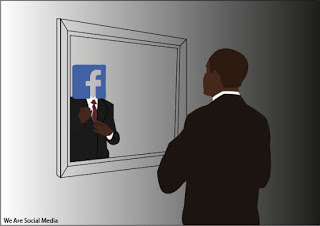
This is a first design of this idea, it reflects the person getting ready in the mirror but what they really see back at them is what social media they use and what they post looking back at them. It also shows how other people might see us as many people only know us from the things we post on social media so when they see us all they see is what they have liked on our pages.
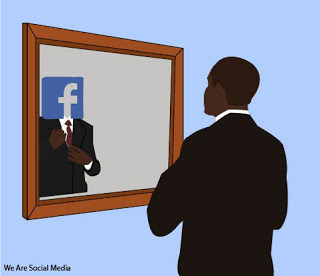
This is an improved version of the first design, for this one i added in a colour for the mirror to give the image more detail, and i removed the gradient colour and went for a light blue background. I chose blue as it fits with the colour of the selected social media design, and this just helps to like the image together.
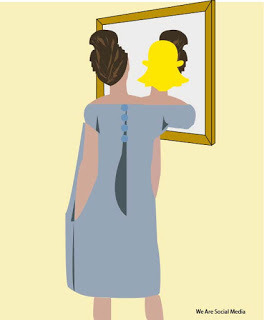
This is my second design connected to a different social media. Again sticking with the design of having someone looking at themselves in a mirror with their 'most used' social media logo reflecting back on them, showing what people really see when they see them (they only see what they see you post on a particular social media site). Again i wanted the image linked to the logo of the media and so i went for a pale yellow as the Snapchat logo is yellow.
Presentation: For this design i want a series of these images that will be distributed and displayed in a physical form rather than digital, to remove people from the internet, by telling them they are becoming the internet through physical form. I want these designs to be displayed as posters, flyers an postcards, ways people can physically hold and look at the poster rather than scroll past it.
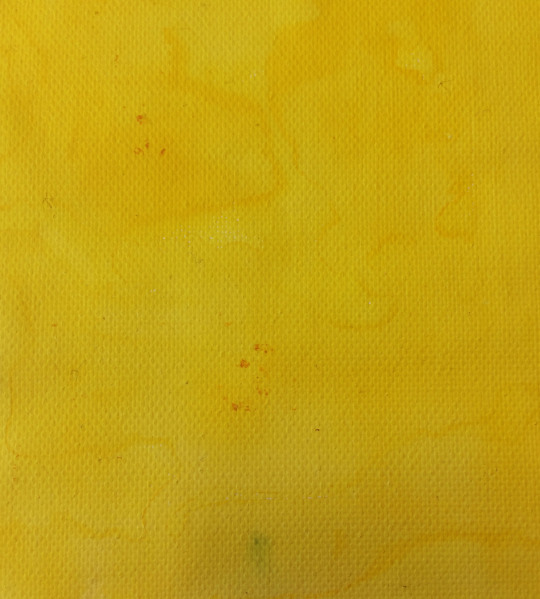
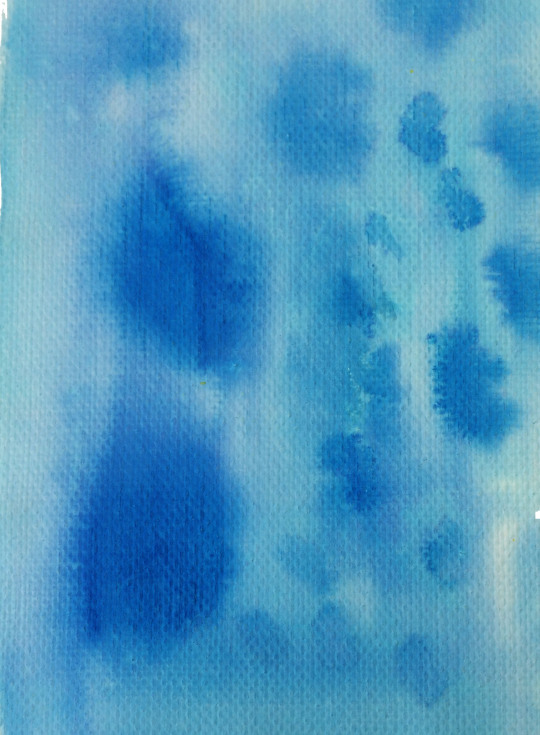
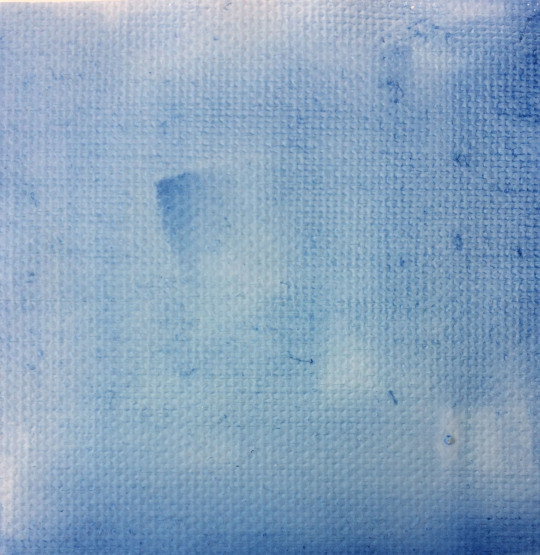
To move away from having a fully digital outcome. I looked at different ways of creating textured backgrounds for the image to be put onto. I worked with inks and water to create these coloured backgrounds. Their colours are uneven making it more ‘human’ than computerised because it isn't perfect like the previous backgrounds where, moving the design away from the computer.
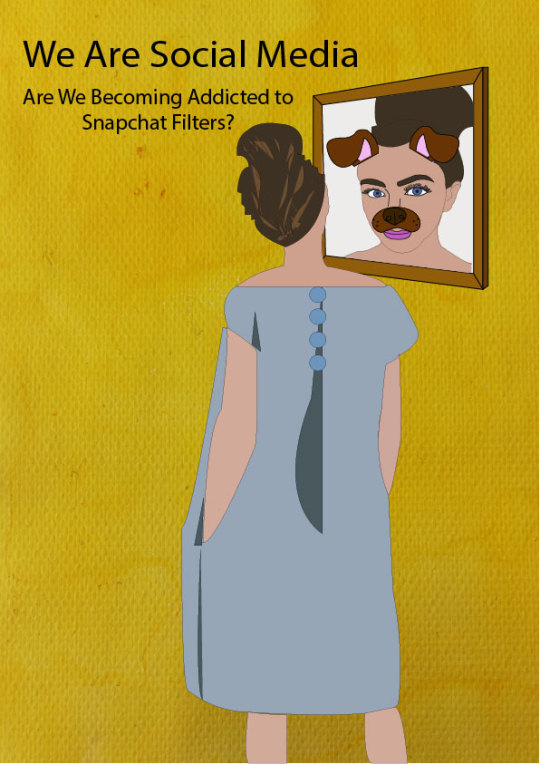
This became the extended version of the ‘Snapchat’ poster. I stuck with the original design from the previous outcome. For this design i used the background i created using ink and water, for the more imperfect, away from the computer, look, with the digital design top. I changed the design for the reflection. I did this to remove the typical ‘Snapchat’ logo so that it wasn’t obvious. I changed the design so that it was a real reflection of the person on the design, however so that you could still tell it was supposed to be linked to ‘Snapchat’ i included the ‘Filters’ that are commonly used on the 'Snapchat’ app. After creating the new design for the poster i thought about the filters that people use on Snapchat and how they are very commonly used in peoples everyday lives now and i thought of ways that this could be showed, as this is a display of how social media has taken over our lives as people always try to include these filters in the photos they take.
0 notes